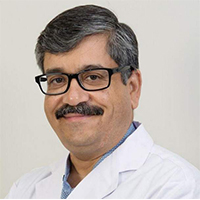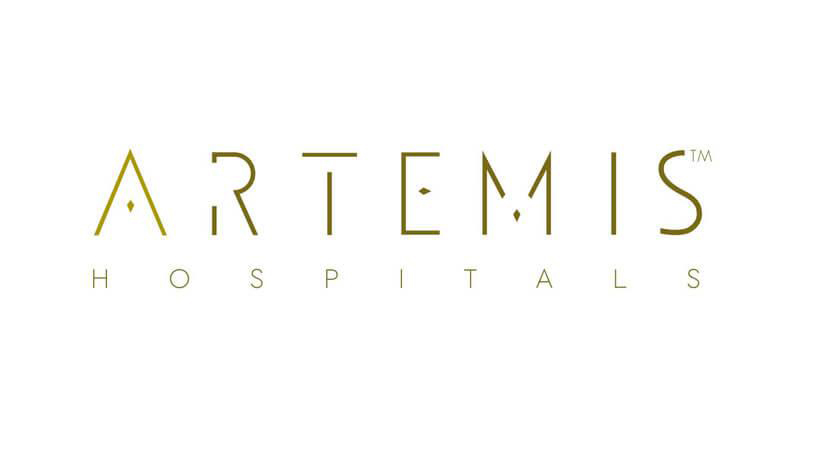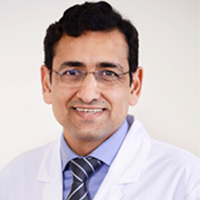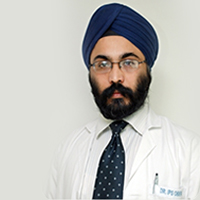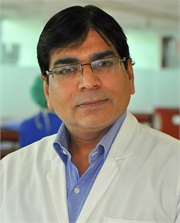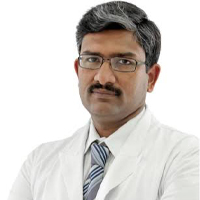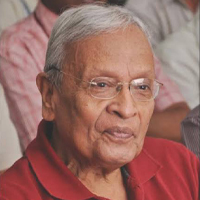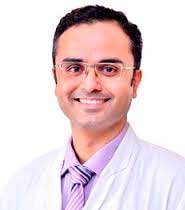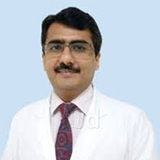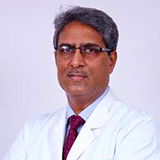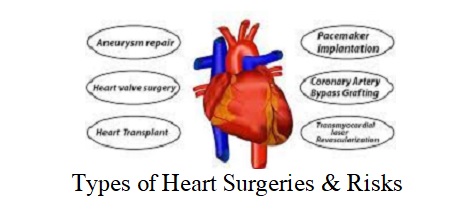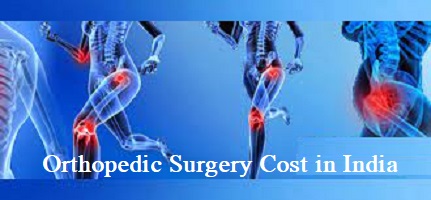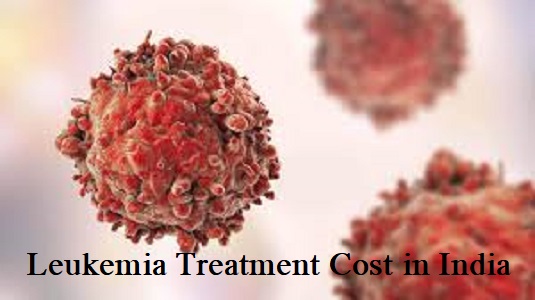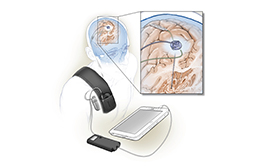
Get Free Treatment Plan From Top Hospital
Attach Medical Report
Parkinson Disease Treatment in India
Parkinson’s disease is a brain disorder that causes tremors, stiffness and problems with balance and coordination and other unexpected or uncontrollable movements. Symptoms usually start mild and worsen over time. As the illness worsens, the patient has trouble speaking and walking. Additionally, they could go through mental and behavioural changes sleep issues, depression, memory issues, and exhaustion.
Parkinson’s disease can affect anyone however some research indicates that men are more likely than women to develop the condition. The cause is unknown, but a study is being undertaken to determine what elements make someone more vulnerable. Age is an obvious risk: although approximately 5-10% of Parkinson’s patients develop under the age of 50, the disease often first appears in people over 60 years of age. Few early stages of Parkinson’s disease are linked to features such as genes, while others are often (but not always) genetic.
Symptoms of Parkinson’s disease
Parkinson’s disease is a neurodegenerative disease that affects the essential nervous system. The signs and symptoms of Parkinson’s disease can differ from person to person and can get worse over time. The following list of symptoms and signs of Parkinson’s disease includes:
Tremor, or shaking, is one of the most common signs of Parkinson’s disease, and it often starts in one hand or finger. These tremors often occur when the affected limb is at rest.
- Bradykinesia: This term describes sluggish motion. Parkinson’s patients may have trouble starting and finishing voluntary activities like walking, writing, or buttoning a shirt. Simple chores could take longer to finish.
- Rigidity: Parkinson’s disease frequently manifests as stiffness and muscle rigidity. When muscles are stiff and difficult to move, it can be uncomfortable and difficult to move around.
- Postural instability: Parkinson’s disease frequently causes balance and coordination problems. People could find it difficult to stand up straight and might be more likely to tumble.
- Akinesia: This term describes the absence or diminution of involuntary motions, including blinking, arm swinging while walking, and unprompted facial expressions. There is also evidence of facial masking, which makes the face seem less active.
- Freezing: Some Parkinson’s disease sufferers may go through spells where they feel “stuck” and unable to move, particularly while starting to walk or changing directions.
- Micrographia: Due to diminished fine motor control, handwriting may get smaller and gradually more difficult to read and write.
- Speech and swallowing problems: Parkinson’s disease can affect the muscles that produce speech and swallowing, leading to a decrease in capacity, slurred speech and swallowing difficulties.
- Non-motor symptoms: In addition to motor symptoms, Parkinson’s disease can also cause non-motor symptoms such as misery, anxiety, sleep disturbances, irregularity, urinary problems, loss of smell (anosmia) and cognitive deviations.
Parkinson’s Disease Pre procedure
It would depend on the precise procedure being performed if you are referring to pre-procedure preparations for those with Parkinson’s disease. However, it is good to remember some general concepts:
- Talk to your medical professionals. It is important to talk with your medical team, which should include the treating surgeon as well as a neurologist or main care physician. They will offer you instructions exactly as per your requirements and scenario.
- Medication adjustments: Prior to the procedure, Parkinson’s disease medications may need to be changed. Pharmaceuticals may interact with the anaesthetic or other medications being used in the surgery. Your medical squad will advise you on how to stop or change treatment and how to manage it through this period.
- Full assessment: Medical professionals can perform a general health assessment of you, taking into account any problems associated with Parkinson’s disease, such as movement problems, muscle stiffness or balance problems. This evaluation helps to choose the best strategy for the procedure and postoperative care.
- Physical therapy: Your healthcare staff may suggest preoperative physical therapy sessions depending on the surgery and your physical condition. Strength, flexibility, and mobility can all be improved through these sessions, facilitating recovery and lowering the possibility of problems.
- Assistive devices: Before the surgery, make sure that any walking aids or orthotics you use are in good condition and are adjusted properly. Utilizing these tools can improve mobility prior to surgery and speed up recovery afterwards.
- Support network: Let your family, friends, or carers know about the impending procedure so they can offer help and support before and after it.
- Nutritional advice: Adhere to any dietary suggestions offered by your medical team. In some cases, fasting could be required before surgery in order to lower the risk of complications from anaesthesia.
Remember that these suggestions are general, so it is crucial to consult your medical team for advice specific to your case and the therapy you are receiving.
Parkinson’s Disease During the procedure
While there is now no known treatment for Parkinson’s disease, there are medications to help manage signs and maintain quality of life. These treatments contain supportive care such as physical therapy, medication, and surgery (in a few people). If you have early-stage Parkinson’s disease, you may not need treatment because the symptoms are often mild. You may need to understand your specialist to check your condition. You can get a device to monitor your symptoms at home. The tool displays information about your industry.
Your healthcare team, family members, and carers should all agree on a care plan. Supportive therapies like physiotherapy, medicine, and surgery (for some people) are among these treatments.
Parkinson Disease Treatments
Keep in mind that these recommendations are broad, and it is essential to speak with your healthcare team to receive tailored advice based on your unique situation and the treatment you are having.
Supportive therapies
A variety of medications are available for people with Parkinson’s disease that can decrease daily signs and improve the brilliance of life. Your doctor can give you advice and assistance.
Physiotherapy
A physical therapist can work with you to relieve muscle stiffness and joint pain through movement (manipulation) and exercise.
A physical therapist has a goal to facilitate movement and improve your walking and flexibility.
It also tries to improve your fitness and ability to manage things yourself.
Occupational therapy
An occupational therapist can identify your daily life challenges, such as dressing or going to the market. They will help you find practical solutions and ensure that your home is safe and properly installed. This way you can keep your independence. Slurred speech and inability to bite are common signs of Parkinson’s disease. Learning to speak and swallow and getting assistive knowledge from a speech and language therapist can often help you deal with these problems more effectively.
Diet advice
Changing diet can help certain Parkinson’s disease sufferers with their symptoms, according to nutrition experts. Increasing your intake of fibre and making sure you are drinking enough fluids to prevent constipation are two examples of these adjustments. Consuming more salt and eating more frequently to prevent low blood pressure issues like light-headedness when you get up rapidly; altering your diet to prevent unintended weight loss;
If your care team thinks you would advantage since a change in diet, they may mention you to a dietitian who specializes in nutritional therapy.
Medication
Medicines can be used to decrease tremors and movement problems, which are the main signs of Parkinson’s disease. However, not all medications work aimed at everyone, and they all have short- and long-term things.
The following three types of medicine are frequently used
- levodopa
- Monoamine oxidase-B inhibitors
- Dopamine agonists
Your specialist can explain your treatment options, including the risks associated with each medication, and discuss which may be best for you.
Regular reviews will be required depending on the progress of the condition and changes in your needs.
Levodopa
Most Parkinson’s patients eventually require the medication levodopa.
The chemical dopamine, which is used to send signals between the areas of the brain and the nerves that regulate movement, is created when levodopa is taken by the nerve cells in your brain.
Increasing dopamine levels with levodopa usually improves movement problems.
It is usually taken as a tablet or liquid and is often combined with other medication, such as benserazide or carbidopa.
These medications stop levodopa from degrading in the bloodstream before it may enter the brain.
Additionally, they lessen levodopa’s negative effects, which include:
- feeling and being sick
- tiredness
- dizziness
Levodopa is typically provided with a very low starting dose that is then gradually increased until it begins to work.
Levodopa can initially significantly ease symptoms.
The more brain nerve cells that die, the less the medicine will be absorbed, so its effects may be shorter-lived in the years that follow.
It implies that the dose may occasionally need to be raised.
Dyskinesia, characterized by unpredictable, jerky muscular movements and on-off effects, in which a person abruptly shifts between being able to move (on) and not being able to move (off), are other issues that are linked to long-term levodopa use.
Dopamine agonists
Levodopa has a similar but stronger impact compared to dopamine agonists, which operate as a replacement for dopamine in the brain. Frequently, they can be administered less frequently than levodopa.
Although a skin patch (rotigotine) is also available, they are frequently administered as tablets.
Levodopa is sometimes combined with dopamine agonists since doing so enables the use of lower doses of the drug.
Dopamine agonists may have the following adverse effects:
- feeling and being sick
- tiredness and sleepiness
- dizziness
Dopamine agonists should be used with caution because of increased hallucinations and disorientation, especially in the elderly, who are more susceptible. Dopamine agonists, especially in high doses, have been related to compulsive behaviours in some persons, including gaming addiction, compulsive shopping, and an unusually high interest in sex. If you think you may have these problems, talk to your doctor. It is imperative that family members and carers also notice rare behaviour and tell a professional as soon as possible, as the person may not be aware of it. The early dose of dopamine agonist drugs is often relatively low to avoid nausea and other side effects. Over the course of some weeks, the dose is raised gradually. Your doctor can recommend anti-nausea medicine if nausea becomes a problem. The unexpected onset of sleep is a potentially significant but unusual side effect of dopamine agonist medication. When the dose is increased, this typically happens, and it normally subsides once the dose is steady. If this problem manifests, people are typically recommended to refrain from operating motor vehicles while dose escalation is in progress.
Monoamine oxidase-B inhibitors
Levodopa is one therapy option for early Parkinson’s disease. Another option is the MAO-B inhibitors selegiline and rasagiline.
They increase dopamine stages by blocking the action of a brain chemical or enzyme that breaks down dopamine (monoamine oxidase-B). While their effects are negligible compared to levodopa, selegiline and rasagiline can both reduce the signs of Parkinson’s disease? They can be used in combination with dopamine agonists or levodopa.
Although MAO-B inhibitors are typically well tolerated, they can occasionally have unwanted consequences, such as:
- feeling sick
- headaches
- abdominal pain
- high or low blood pressure
Catechol-O-methyltransferase inhibitors
In later periods, persons with Parkinson’s disease are given catechol-O-methyltransferase (COMT) inhibitors.
They prevent the cleavage of levodopa by the COMT enzyme.
Side effects of COMT inhibitors include:
- feeling or being sick
- diarrhoea
- abdominal pain
Non-oral therapies
There are a number of other treatments that can be careful when controlling the signs of Parkinson’s disease with medicine alone becomes difficult.
Apomorphine
Apomorphine is a dopamine agonist that can be administered subcutaneously (below the skin) as follows:
- a single injection, when required
- Continuous injection using a small pump carried on your belt, under your clothes or in your bag
Co-carbidopa
Co-carbidopa, a form of levodopa, may be constantly fed into your gut through a tube put through your abdominal wall if you have severe Parkinson’s disease.
The tube end has an external pump that is attached to it that you may transport. Use it if you have extreme changes or lack of mobility.
Surgery
Most Parkinson’s patients are treated with medication, but sometimes a technique that is deep brain stimulation is helpful. Your doctor will go over the advantages and disadvantages of surgery with you.
Deep brain stimulation
Deep brain stimulation involves surgically implanting a pacemaker-like pulse generator into the chest wall.
It is tied under the skin with 1 or 2 thin wires and placed in a special area of the brain.
With the help of a pulse generator, wires carrying tiny electrical currents are stimulated in Parkinson’s disease-affected parts of the brain.
Surgery can lessen symptoms in some people with Parkinson’s disease even if it cannot cure the condition.
Parkinson’s Disease post procedure
After a Parkinson’s disease procedure, such as deep brain stimulation (DBS) surgery, there are several effects to consider in post-procedure care and treatment. Here are a few general principles:
- Recovery Time: You will have to stay in the hospital for a short time according to the monitoring and recovery procedure. Reliant on the specifics of each case, hospitalization can last for an unlike period of time.
- medication adjustments: Your medical team will analyse your current medication regimen and make essential changes based on how you are responding to treatment. It is usual to reduce the dose of medication after DBS surgery, but the final say breaks with your doctor.
- Device programming: If you have DBS surgery, the implanted device must be customized to meet your unique demands. It entails selecting the stimulation levels that will best enable you to manage your Parkinson’s symptoms. You will probably need to schedule numerous extra appointments to update the programming.
- Physical therapy and rehabilitation: After the procedure, physical therapy and rehabilitation may be optional to promote mobility, stability and coordination. These treatments can be used to treat muscle weakness or stiffness caused by Parkinson’s disease.
- Treatment and follow-up: It is important to schedule routine follow-up sessions with a neurologist or movement disorder specialist. They will measure your progress, adjust device settings as wanted, and watch for potential problems or negative side effects.
- Lifestyle changes: Parkinson’s symptoms can be managed and general well-being can be improved by maintaining a healthy weight, getting enough sleep, reducing stress and exercising regularly. Certain lifestyle changes can increase the benefits of the procedure.
- Support networks and organizations: Reaching out to Parkinson’s disease support networks or organizations can help you gain vital information, tools, and emotional support for managing your illness after surgery.
Parkinson Disease risks
Risk factors for Parkinson’s disease include:
Age
Young adults rarely experience Parkinson’s disease. It usually starts in middle or late age, and the risk increases with age. Maximum people become ill at age 60 or older. If a child has Parkinson’s disease, genetic treatment can help with family planning decisions. Also, grown-ups with Parkinson’s disease have different jobs, social situations and use of medications and require special kindness. Taking a close-relative with Parkinson’s disease increases the risk of developing Parkinson’s disease. Though, your risk is still low if you have more than one family member who does not have Parkinson’s. Men are more likely to develop Parkinson’s disease than women. Long-term experience with pesticides and herbicides can raise the risk of Parkinson’s disease.
Complications
Parkinson’s disease is often accompanied by the following treatable conditions:
- Thinking difficulties. You may experience cognitive problems such as dementia and difficulty thinking. These usually occur in the late levels of Parkinson’s disease. Medications often cannot help with cognitive difficulties.
- Depression and emotional changes. Occasionally you can experience depression in the initial stages. Getting treatment for depression can find it easier to contract with other difficulties of Parkinson’s disease.
You may also experience extra changes, such as fear, anxiety, or depression. Your healthcare team will give you medication to treat these signs.
- Swallowing problems. You may have difficulty swallowing as the condition progresses. As thirst slows, saliva can build up in the mouth, causing choking.
- Chewing and eating problems. Advanced Parkinson’s disease affects the muscles in the mouth, making it difficult to chew. This can lead to death and malnutrition.
- Sleep problems and sleep disorders. People with Parkinson’s disease often have trouble sleeping, waking up normally at night, waking up in the morning, or falling asleep through the day.
People can also develop REM sleep disorders that involve dreaming. Medicines can improve your sleep.
- Bladder problems. Parkinson’s disease may result in bladder issues, such as an inability to control urination or troublemaking.
- Constipation. Many people with Parkinson’s disease experience constipation, often caused by slow digestion.
You may also experience:
- Blood pressure changes. You may feel faint or lightheaded when you stand up due to a drop in blood pressure (orthostatic hypotension).
- Smell dysfunction. You may have problems with your sense of smell. You may find it difficult to distinguish certain scents or dissimilar scents.
- Fatigue. Many people with Parkinson’s disease lose energy and feel tired, particularly later in the day. The cause is not always known.
- Pain. Some people with Parkinson’s disease have pain in parts of the body or all over the body.
- Sexual dysfunction. Few Parkinson’s disease patients report diminished sexual arousal or performance.
Parkinson’s Disease Treatment in India
India is home to nearly 5.8 lacks Parkinson’s Disease patients. But there’s good news! Nearly all afflicted patients have access to affordable Parkinson’s treatment in India. The therapy methods are rapidly improving, enabling patients to live normal lives. India is renowned for producing highly qualified medical personnel. They believe in executing well-researched, evidence-based treatments. As an effect, patients from all over the world travel to India to accept medical care.
Best Doctor for Parkinson’s disease in India
Parkinson’s is a neuro disorder that is a manageable disease if the doctor treating the patient is experienced and skilled to handle the condition. Finding the best doctor for Parkinson’s disease in India is difficult but not impossible. Al-Afiya Medi Tour can help you connect with the doctors here. The doctors in India are highly experienced and talented in their field to cater for patients in all age groups. The doctors help the patients in planning the best suitable treatment which can benefit them and cause less side-effects.
Below are some of the best doctors that can help the patient in the treatment of Parkinson’s disease and live a better life
- Dr Sanjay K R Chaudharto have a Lajpat Nagar, Delhi, IBS Hospital
- Dr. P. N. Renjen,Sarita Vihar,Delhi Indraprastha Apollo Hospital
- Dr Rajesh Gupta, Patparganj, Delhi Max Super Speciality Hospital
- Dr Anand Kumar Saxena, Dwarka Sector 19, Delhi S.M. Neuro and Health Care Center
- Dr Col. Joy Dev Mukherji, Saket, Delhi Max Super Speciality Hospital – Saket West
- Dr. (Lt Gen) CS Narayanan, Dwarka Sector 6, Delhi, Manipal Hospital
- Dr Ramandeep S. Dang, Greater Kailash Part 1, Delhi Dr Dang’s Brain & Spine Clinic
- Dr Shailesh Jain, Pitampura, Delhi Arihant Neurospine Clinic
- Dr. L K Malhotra, Sheikh Sarai,Delhi Malhotra Neuro Centre
- Dr Sunilkumar Baranwal, Pitampura, Delhi Sukhkarta Brain Spine And Smile Clinic
- Dr Amitabh Gupta, Vasant Kunj, Delhi Spine and Brain Clinic
- Dr Anurag Saxena, Dwarka Sector 6, Delhi Manipal Hospital.
- Dr Hari Radhakrishna. MD, DM
- Dr. G Ranjith. MBBS, MD(General medicine), DM(Neurology), FSIN
- Dr Vikram Kishore Reddy P. MBBS, DNB (Pediatrics), DNB (Neurology)
- Dr Shrikant Deshmukh
- Dr Jaypal Ramdhan Ghunawat
- Dr Rohit Lakkapragada
- Dr Swetha Pendyala
Parkinson’s Disease Hospitals in India
The top hospitals in India take pride in their team of experienced neurologists and medical staff specialists in Parkinson’s treatments. The hospitals in India have a vast spread over the country and provide Parkinson’s treatments to patients of all ages. The Al-Afiya team has strong connections with the top hospitals in India that have state-of-art amenities to cater to all medicinal treatments. The hospitals have the latest technologies installed for the best treatment procedures and to provide better ambience for the patients to recover. Below are some of the best hospitals in India
- Medanta The Medicity, Delhi.
- Artemis Hospital, Delhi.
- Fortis Healthcare, Delhi.
- Indraprastha Apollo Hospitals, Delhi.
- BLK Super Speciality Hospital, Delhi.
- Max Super Specialty Hospital Saket, Delhi.
- Manipal Hospitals Dwarka, Delhi.
- Apollo Hospital, Hyderabad.
- Fortis Memorial Research Institute, Delhi.
- Kokilaben Dhirubhai Ambani Hospital, Mumbai.
- Madhukar Rainbow Children Hospital, Delhi.
- Nanavati Super Speciality Hospital, Mumbai.
- Apollo Hospital, Chennai.
- Seven Hills Hospital, Mumbai.
- Moolchand Medcity, Lajpat Nagar, Delhi.
- Apollo Hospitals, Greams Road, Chennai.
- Manipal Hospital, Bangalore
Parkinson’s disease treatment cost in India
- Parkinson’s Disease Treatment Cost in India depends on the patient’s medical history, overall health, and the type of treatment opted for
- The cost of deep brain stimulation surgery ranges from 15,000 USD to 27,000 USD.
- The total stay in India is approximately 25-40 days.
Parkinson’s plus syndrome disease treatment in India
Treating them usually is about managing the symptoms. That can include the following:
- Medication can help some people move more easily and feel less stiff
- A cane or walker can help you get around.
- Speech therapy can help you communicate better.
- Exercise and physical therapy can make your muscles strong and more flexible.
- Occupational therapy can help make everyday tasks easier.

Top Parkinson Disease Treatment Doctors in India
Parkinson’s surgery is essential as it is related to the nerves. Therefore, if you are someone from a foreign country looking for DBS surgery in India, then you are at the right place. Al Alfiya Medi Tour is a leading name in the medical tourism industry, helping foreigners get the most suitable and affordable medical treatments in India. Our team has several specialists that deal with these things daily. We provide services in almost every state and prominent city in India. Our team comprises highly qualified professionals with a lot of experience. They are available 24/7 and can assist you with your medical needs and emergencies. Starting with getting treatment-specific quotes from the best hospitals and doctors, arranging visas, ensuring you have a place to stay while in India, staying in touch with the doctor and hospital during treatment, and getting feedback after treatment.

Best Parkinson Disease Treatment Hospitals in India
Are you looking for the best and most affordable hospitals in India for DBS surgery? Then don’t worry; Al Alfiya Medi Tour has a link with the most renowned hospitals in India that offers the best Parkinson’s disease treatment cost in India at an affordable range. We know everything there is to know about medical tourism, and we work with some of the best hospitals in India that treat a wide range of illnesses and do surgery. We are known for giving our clients excellent value in terms of price, safety, comfort, and treatments. Because of this, we believe in providing our patients with the greatest possible medical care and knowledge at the lowest possible pricing. Some of the best physicians in the world may be found in India, a popular destination for medical tourists. We assist with top-notch medical care affordable than in the United States.
Book An Appointment for Parkinson’s Disease

Get Free Treatment Plan From Top Hospital
Attach Medical Report

Cost of Parkinson Disease Treatment in India
Parkinson’s disease is a long-term disorder that affects the nervous system. Its causes are still a mystery, although genetic and environmental variables may play a role in its development. Experts have discovered clear connections between toxic exposure and prior traumatic brain damage. In order to prevent Parkinson’s disease, it is possible to maintain a balanced diet, exercise regularly, and avoid pollutants. The Parkinson’s disease treatment cost in India might cost between 7000 and 9900 USD depending on the number of patients, the kind of treatment, the length of their stay, and other factors. An Indian deep brain stimulation procedure can set you back anything from $15,000 to $27,500 in your budget.

Success Rate of Parkinson Disease Treatment in India
Deep brain stimulation won’t cure your sickness but may alleviate your symptoms. Even if deep brain stimulation proves effective, your symptoms are unlikely to go away altogether. Certain conditions may need the continued use of drugs.
The effectiveness of DBS depends on various factors. For some people, DBS doesn’t work. Before undergoing surgery, discussing your expectations with your doctor is important.
Contact Form
Attach Medical Report
Top Doctors & Surgeons in India
Why Choose Us

Personalized Care
24x7 Supports
Top NABH and JCI accredited Hospitals
Free Cost Estimation & Medical Opinion from Specialist
Get Free Tele/Video Consultation
Visa and Traveling Assistance
Post-surgery with Assistance in Follow-ups

